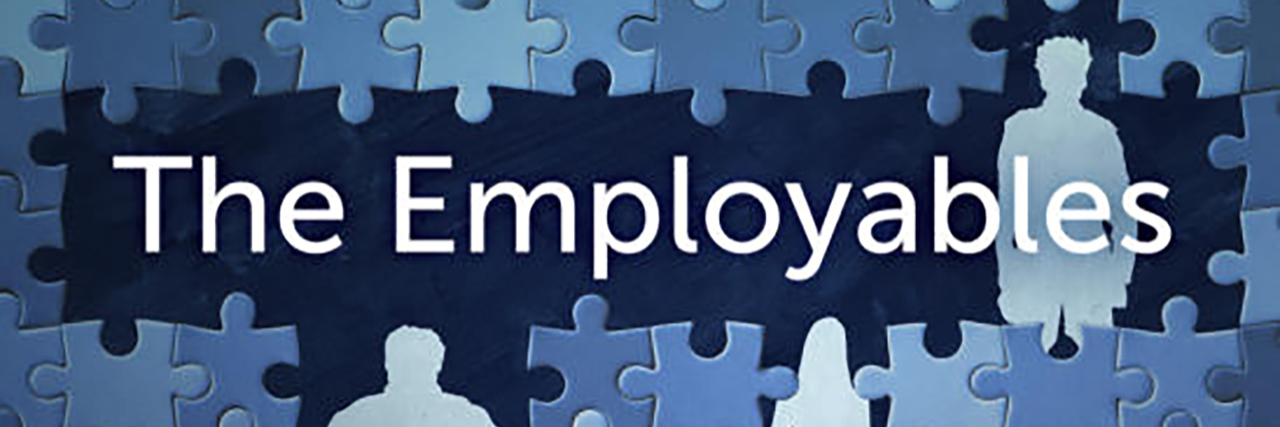'The Employables' Shows the Challenges and Joys of the Job Hunt for People With Disabilities
Adam Fishbein, a National Leadership Fellow at RespectAbility, has Tourette syndrome, one of the disabilities highlighted in A&E’s new show “The Employables.”
The entertainment industry has recently made meaningful progress in the accurate representation of people with disabilities in TV shows. Accurately portraying and including people with disabilities on screen is not just the right thing to do, it also makes sense economically – given that the disability market is valued at more than $1 trillion according to Nielsen Research.
One of the latest additions to this trend is A&E’s “The Employables.” Each episode in this docuseries follows two unemployed individuals in their job search – one with Tourette syndrome (TS) and one on the autism spectrum. Through interviews with the individual, their family, and potential employers, “The Employables” effectively displays the struggles of the job search for people with disabilities.
“I went from being on the dean’s list to becoming academically disqualified,” said James, a 35-year-old with TS in the first episode. “But it’s what we got. It’s the cards you’re dealt so you play the hand you have.”
However, “The Employables” also showcases the unique skills and talents of each individual and how these traits can benefit their employers as much as – and often more than – people without disabilities. For example, when medical professionals conduct IQ testing, each candidate consistently scores above-average for traits such as perceptual reasoning, creativity and verbal comprehension.
Occupational psychologist Dr. Nancy Doyle tested 23-year-old Hayden, who is on the autism spectrum. “Hayden is an incredibly talented young man,” Doyle explained. “There are only 1 in 1000 that will have verbal skills as good as his and only 2 in 1000 that will have visual spatial reasoning skills like he has and, you know, those are phenomenal abilities.”
As a person with TS myself, I appreciate that people with TS are being given the opportunity to showcase what they can do, versus what they cannot do. However, I personally did not like how the camera often lingers after the person with TS had finished speaking but was still ticcing. This seemed degrading to me because they were overemphasizing the presence of tics in the individual’s life for entertainment purposes and to make viewers sympathize with or feel sorry for them. On the other hand, the producers effectively showed the subjects’ desire to meaningfully contribute to society and fulfill their personal goals through employment.
“To find a job, it would give me a chance to provide for my family. So we can move together, forward. That is my goal in life,” James said. “I want to be able to contribute to society. I want to feel like I can be part of something.” This perception of people with disabilities is much more accurate than their historical portrayal as deserving of pity and being unable to add value to society.
As the season continues, I hope to see more diversity, as it is important to show people of all races, ethnicities, genders, sexual orientations, religions, etc. Disability does not discriminate and people with disabilities from additional marginalized backgrounds often face additional barriers.
Representations of People with Disabilities On-Screen Still Rare
Overall, “The Employables” is a major step in the right direction. With just 2.1 percent of scripted television characters having a disability, it is heartening to see more and more representation of people with disabilities in reality television, as well as shows specifically about their day-to-day lives. “The Employables” is the latest in a long list of A&E shows that shine a spotlight on disability. Last year, A&E aired “Deaf Out Loud,” a documentary that followed the lives of three predominantly deaf families who utilize different communication modalities in everyday life. A&E is also the home of “Born This Way,” an Emmy-award winning reality show starring people with Down syndrome who want to achieve independence.
“Airing shows with disability front and center does not happen by accident,” said Lauren Appelbaum, who leads RespectAbility’s Hollywood Inclusion efforts as the organization’s Vice President of Communications. “What we see on screen influences how we act in real life. Thus, when networks like A&E make the decision to include television shows highlighting individuals with visible disabilities in positive and accurate portrayals, they can help to remove the stigmas that currently exist about both interacting with – and employing – individuals with disabilities.”
Like “Will and Grace” and “Modern Family” helped to change perceptions of the LGBTQ community, an increase in diverse and authentic portrayals of people with disabilities on television can help to end stigmas and advance opportunities for people with disabilities. Shows like “The Employables” are presenting people with disabilities for who they are, and that is worth celebrating.
Disability Unemployment in Need of a Spotlight
According to the Census Bureau, there are more than 56 million Americans living with a disability. Disabilities include visible conditions such as spinal cord injuries, visual impairments or hearing loss and invisible disabilities such as learning disabilities, mental health and autism. In the United States, there are more than 20-million working-age people with disabilities. However, only 37 percent of them are employed. Only 111,804 people with disabilities entered the workforce in 2017, down from the previous year’s increase of over 343,000 new jobs for people with disabilities.
Brand name companies such as JP Morgan Chase, Coca-Cola, Ernst & Young, IBM, Walgreen’s, Starbucks, CVS and Microsoft show people with disabilities are successful employees. These companies also know that these workers improve the bottom line. The impact of employees with disabilities is well documented and includes: higher retention rates, productivity levels, lower absenteeism and lower injury rates.
The Employables airs on A&E on Wednesday evenings at 10:00 p.m. ET / 7:00 p.m. PT.
Image via A&E.

